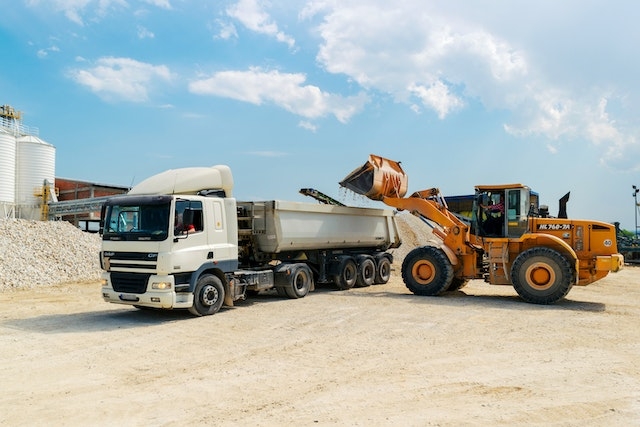Introduction
The "golden thread of information" is a concept often used in the context of construction and building safety regulations in the UK. It refers to the principle that relevant information about a building, from its design and construction to its operation and maintenance, should be transparent, accessible, and available throughout its lifecycle. This includes details about the design intent, materials used, construction methods, and any changes made over time.
The idea behind the golden thread is to ensure that crucial safety information is consistently documented and readily available to those responsible for the building's safety, including owners, occupants, and emergency responders. This helps to promote accountability, improve decision-making, and enhance overall safety performance in the built environment.
Legal
In the UK, several pieces of legislation pertain to the concept of the golden thread of information, aiming to improve building safety and ensure accountability throughout a building's lifecycle. Some key legislation includes:
- Building Regulations 2010: The Building Regulations set out requirements for the design and construction of buildings in England and Wales. They include provisions related to fire safety, structural stability, accessibility, and energy efficiency. Compliance with the Building Regulations often requires thorough documentation of design, construction, and ongoing maintenance activities.
- Construction (Design and Management) Regulations (CDM) 2015: The CDM Regulations aim to improve health and safety in the construction industry by placing duties on clients, designers, and contractors throughout the project lifecycle. Under the CDM Regulations, duty holders are required to share relevant health and safety information and cooperate with each other to ensure the safety of the construction project.
- Health and Safety at Work etc. Act 1974: This overarching legislation sets out general duties for employers, employees, and others to ensure health and safety in the workplace. While it does not specifically address the golden thread of information, it underpins the broader legal framework for health and safety in the construction industry.
- Fire Safety Order (Regulatory Reform (Fire Safety) Order 2005): This legislation applies to non-domestic premises in England and Wales and sets out fire safety duties for building owners and occupiers. It includes requirements for the maintenance of fire safety equipment, as well as the provision of information to occupants about fire safety measures. In Scotland, the Fire Scotland Act 2005 is applicable.
- The Building Safety Act 2022: This legislation aims to reform the building safety regulatory system in the UK following the Grenfell Tower fire. It includes provisions for a new Building Safety Regulator and introduces requirements for a Building Information Modelling (BIM) mandate, which will contribute to the golden thread of information by digitising building information and making it more accessible.
Stakeholders
The golden thread of information applies to various stakeholders involved in the construction, management, and maintenance of buildings. These stakeholders include:
- Designers and Architects: They have a duty to create clear and comprehensive design information that accurately represents the intended construction and functionality of the building. This includes specifying materials, systems, and layouts that contribute to safety and compliance.
- Contractors and Builders: They are responsible for translating design information into physical construction. It is their duty to ensure that the construction process follows the design intent and meets safety standards. They should also document any deviations or changes made during construction.
- Developers and Clients: They have a duty to provide clear project requirements and ensure that the construction process aligns with safety regulations. They are responsible for overseeing the project and ensuring that appropriate documentation is maintained throughout its lifecycle.
- Building Owners and Managers: They are responsible for maintaining accurate records of the building's design, construction, and ongoing maintenance activities. This includes updating documentation as changes are made to the building and ensuring that relevant safety information is accessible to occupants and emergency responders.
- Regulatory Authorities: Regulatory bodies have a duty to establish and enforce building safety regulations. They may require stakeholders to comply with specific documentation and reporting requirements to ensure that the golden thread of information is maintained.
Overall, each stakeholder involved in the construction and management of buildings plays a crucial role in maintaining the golden thread of information to uphold safety standards and ensure the integrity of the built environment.
Documentation
The golden thread of information encompasses a wide range of documents and information that are crucial for ensuring the safety and integrity of a building throughout its lifecycle. Some of the key documents and information typically included in the golden thread are:
- Design Information:
- Architectural drawings: Floor plans, elevations, sections, and details that show the layout and design intent of the building.
- Structural drawings: Details of the building's structural elements, including beams, columns, and foundations.
- Mechanical and electrical drawings: Plans showing the layout of HVAC systems, electrical wiring, plumbing, and fire protection systems.
- Specifications and Material Information:
- Specifications: Detailed descriptions of materials, products, and construction methods specified for use in the building.
- Material data sheets: Information about the properties, performance, and fire resistance ratings of building materials.
- Construction Information:
- Construction plans and schedules: Documents outlining the sequence of construction activities and the timeline for completion.
- Site inspection reports: Records of inspections conducted during construction to ensure compliance with design and regulatory requirements.
- As-built drawings: Revised drawings that reflect any changes or deviations made during construction.
- Maintenance and Operation Information:
- Operation and maintenance manuals: Instructions for operating and maintaining building systems and equipment.
- Maintenance schedules: Plans detailing routine maintenance tasks and schedules for various building components.
- Records of maintenance activities: Documentation of inspections, repairs, and maintenance performed on building systems and components.
- Fire Safety Information:
- Fire risk assessments: Evaluations of fire hazards and risks within the building, along with recommendations for mitigating measures.
- Fire safety plans: Procedures for evacuation, fire detection, and firefighting in the event of a fire.
- Records of fire safety equipment: Documentation of the installation, testing, and maintenance of fire safety equipment such as alarms, extinguishers, and sprinkler systems.
- Occupancy Information:
- Occupancy classifications: Descriptions of the types of activities and uses permitted within different areas of the building.
- Emergency contact information: Details of individuals or organizations responsible for managing emergencies and communicating with occupants.
- Regulatory and Compliance Documentation:
- Building control approvals: Records of approvals and permits obtained from regulatory authorities during the design and construction phases.
- Certificates of compliance: Documentation certifying compliance with relevant building regulations, codes, and standards.
Maintaining accurate and up-to-date documentation of these documents and information is essential for facilitating effective communication, decision-making, and emergency response throughout the building's lifecycle





